How to Upload Pictures to a Database Matlab
How to Extract Data from Graph Image for Gratis?
Updated 1 twelvemonth ago • 5 min read
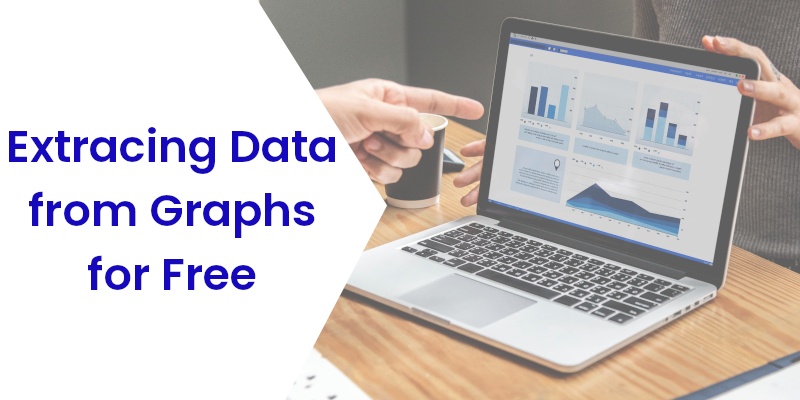
Graphs and charts are visuals that show the relationship between unlike measurements. We all rely heavily on graphics to represent our data and inquiry to our audience. For example, a sales managing director would stand for the company's sales in bar charts, or a scientist oftentimes concludes their experimental results in scientific visuals.
However, sometimes individuals, instead of plotting data, might want to reserve-engineer graph images. And it is non an effortless procedure unless yous are using the right tool.
PlotDigitizer is a simple but very effective tool for extracting data from graph images. It has many in-built features that ease data extraction. The software has a complimentary online app, which is competent enough for data extraction. For high functionalities, yous need to upgrade to the pro version. You tin can try the complimentary online app here.
PlotDigitizer supports several types of graphs, that includes, XY, bar, cavalcade, pie/doughnut, polar, ternary, maps. Besides graphs, you tin calculate the distance, bending, and area of the portion on the image.
Extracting information from graph prototype
In the post-obit text, we will take an example to explicate how to use PlotDigitizer.
The graph below displays the expenditure per student (in thousands) from 1977 to 2002.
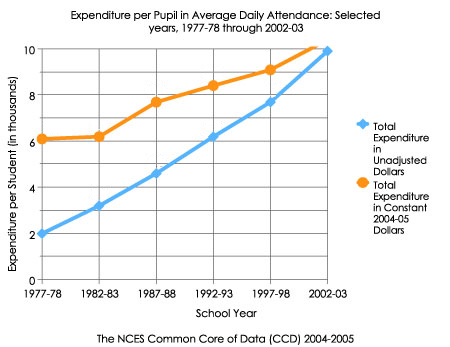
There are 2 plots in the effigy; the first is for expenditure with the unadjusted dollar (in blue), and the other is for the adapted dollar as of 2004–05 (in orange).
We can extract the data from the graph by following uncomplicated steps:
Footstep ane: Upload the prototype to PlotDigitizer
Go to PlotDigitizer's costless online app, and upload the epitome by clicking or elevate-dropping.
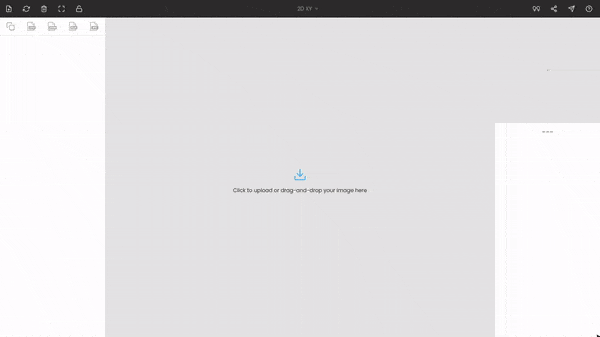
PlotDigitizer accepts several image formats, so you lot will probably not have whatsoever back up issues. The preferred image files are PNG, JPG, SVG, GIF, TIFF, and BMP.
If yous have a pro version of PlotDigitizer, and so you can crop out unnecessary portions of the image using the epitome editing tool kit. For instance, in the higher up image, the fable and the title are unnecessary for data extraction and could be removed. Further, you can adjust the paradigm with a rotation tool or increment/decrease the size of the image with the scale tool.
Step ii: Select the graph type
Later uploading, you have to select the graph type; in our case, it is XY, which is the default selection.
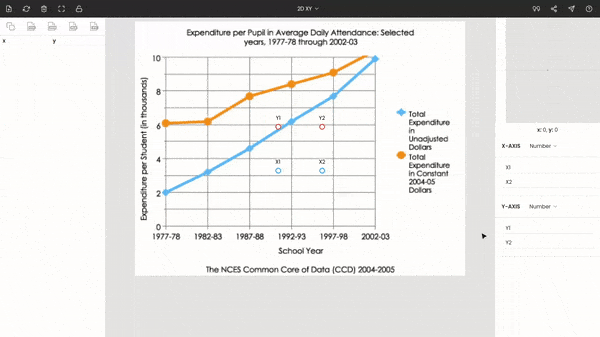
Stride 3: Calibrating the axes
It is an XY plot, so you have to calibrate two axes. Elevate and drop all the iv points (x1, x2, y1, and y2) to the extremes of the plot. Here, x1 and x2 are moved to 1977 and 2002, while y1 and y2 are dragged and dropped to 0 and 10.
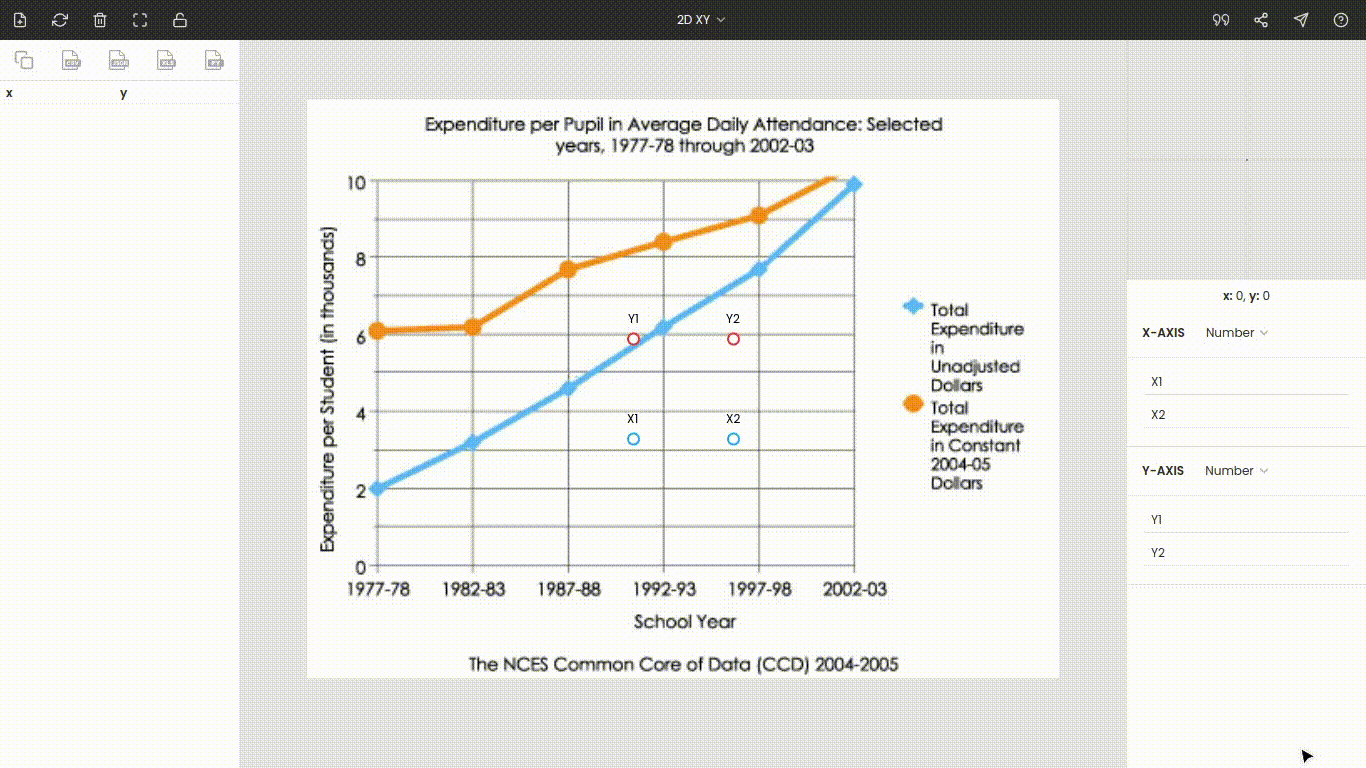
Y'all do not necessarily accept to motility to the extremes though it is recommended since it increases the accuracy of the calibration.
The zoom panel (or magnifier) on the top-right side helps yous to amend the accuracy while selecting and dropping the points.
The y-axis is linear, while the 10-axis is the date calibration. So, change the x-axis scale to appointment and insert the values of the points (y1 = 0, y2 = 10, x1 = 1977-01-01 00:00:00, x2 = 2002-01-01 00:00:00). Remember the dates are inserted in yyyy-mm-dd hh:mm:ss format. If you are using the pro version, and then at that place will be a date and time picker to achieve this.
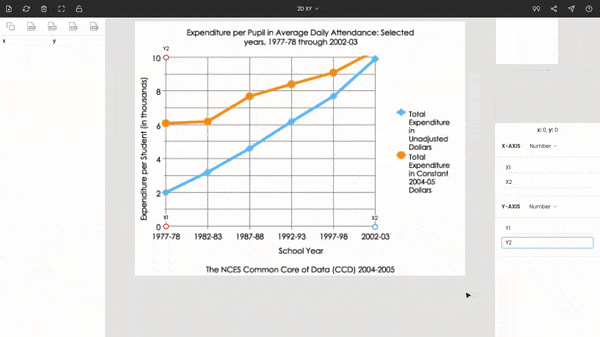
You can hide the points past clicking the lock icon located somewhere on the elevation of the window.
Footstep 4: Extracting data points from the plot
Once the axes are calibrated, get-go marking points on the curves to record data points. You tin can come across the values on the side panel.
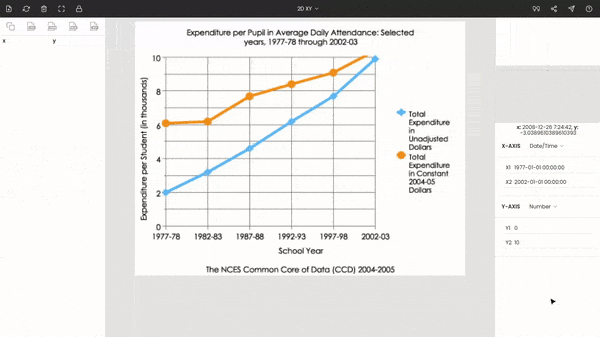
Further, you can edit, sort, or modify the values.
Step 5: Exporting the extracted data
In the end, the extracted data can be exported in various formats, eastward.g., CSV, JSON, MatLab, Python array, MS Excel.
Source: https://plotdigitizer.com/extrac-data-graph-image
0 Response to "How to Upload Pictures to a Database Matlab"
Post a Comment